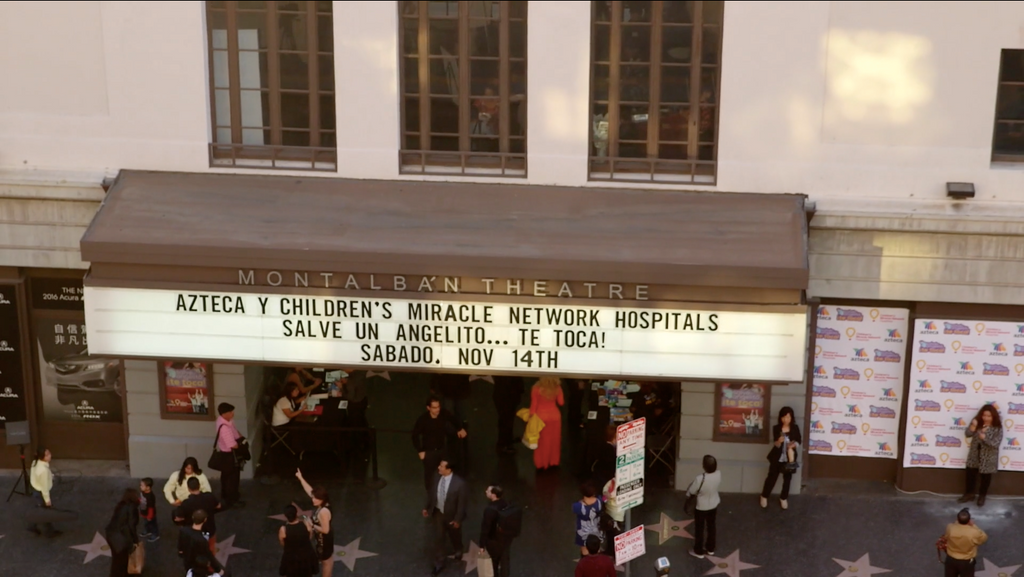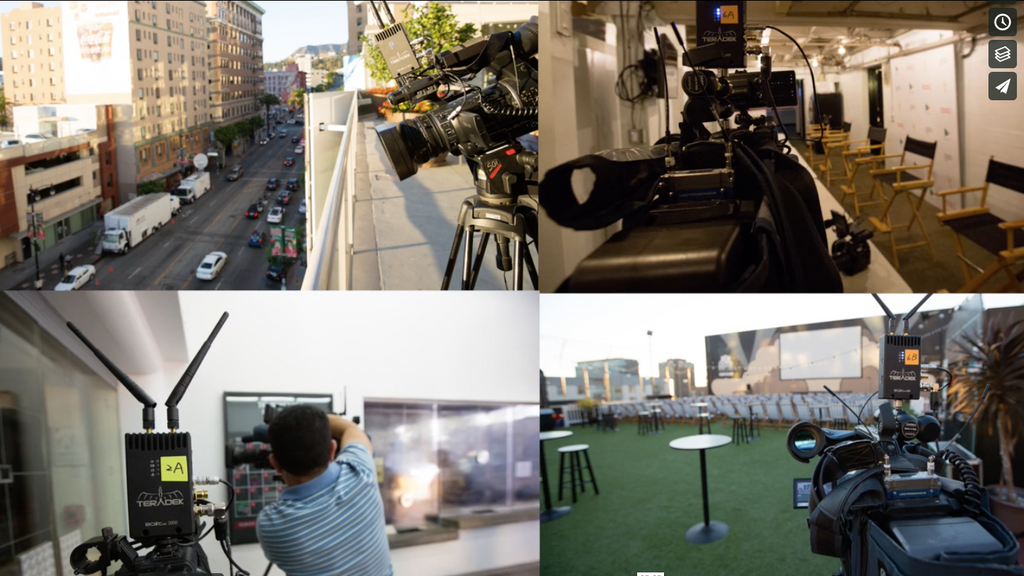
In this video, Jorge Mettey, VP of News and Community Outreach at Azteca, explains how he successfully managed multiple feeds from all over the country into a single mix for broadcast.
Azteca Chooses Teradek to Achieve Worldwide Broadcast Success from Teradek on Vimeo.
In sponsorship of Children’s Miracle Network Hospitals, Azteca hosted a live fundraising event on their TV channel broadcasting to Latino communities in America and Mexico. Shedding the traditional method of TV productions, they opted for an IP-based alternative to help broadcast the event and enlisted Teradek products to do it.
The challenge was to bring a live feed from each of the 9 cities hosting the large event and combine them into a single feed for viewers’ TV screens. To accomplish this, Azteca placed a Cube at locations where Ethernet was available and a Bond II at locations where no hardline connection was available, relying on bonded cellular connections. All of these feeds were then sent to Teradek’s cloud-based management platform CORE, which was easily managed by the production team.

Once the feeds were received by CORE, they were sent to T-RAX (a compact 2RU high density encoder/decoder card system) decoders in Los Angeles. The T-RAX then sent the decoded feeds to the main switch, and from there the production team fine-tuned the feed for sending to live TV.
In addition, Azteca also wanted 4 video cameras set up in and around the venue to capture the entire atmosphere of the event. Rather than having meters and meters of wires running to the control room, Teradek equipped each video camera with a Bolt transmitter which sent video feeds wirelessly with zero delay via RF to Bolt receivers in the control room. The Bolt receivers sent the feeds using SDI out into the main switch.
 Going the IP route served two purposes for Azteca: it reduced costs significantly and made the broadcasting process more efficient. “We are talking hundreds of thousands of dollars. I can’t even believe how much that would cost me,” says Mettey.
Going the IP route served two purposes for Azteca: it reduced costs significantly and made the broadcasting process more efficient. “We are talking hundreds of thousands of dollars. I can’t even believe how much that would cost me,” says Mettey.
As opposed to the old-fashioned way of broadcast which entailed having satellite trucks at each location and wired cameras, using Teradek encoders - all pre-configured with CORE - enabled live feeds to be sent via available Internet connections and cellular networks instead of expensive satellite connections. This reduced the logistics of the operation dramatically because it removed the need for additional broadcasting personnel at each location and the amount of machines needed.
For Azteca, the fundraiser event was a huge success in raising money for a good cause. Having the wireless technology to streamline the process allowed them to focus on hosting the show instead of worrying about broadcasting difficulties.
Mettey explains, “This is way more reliable than the traditional way of doing TV. I’m convinced of that.”